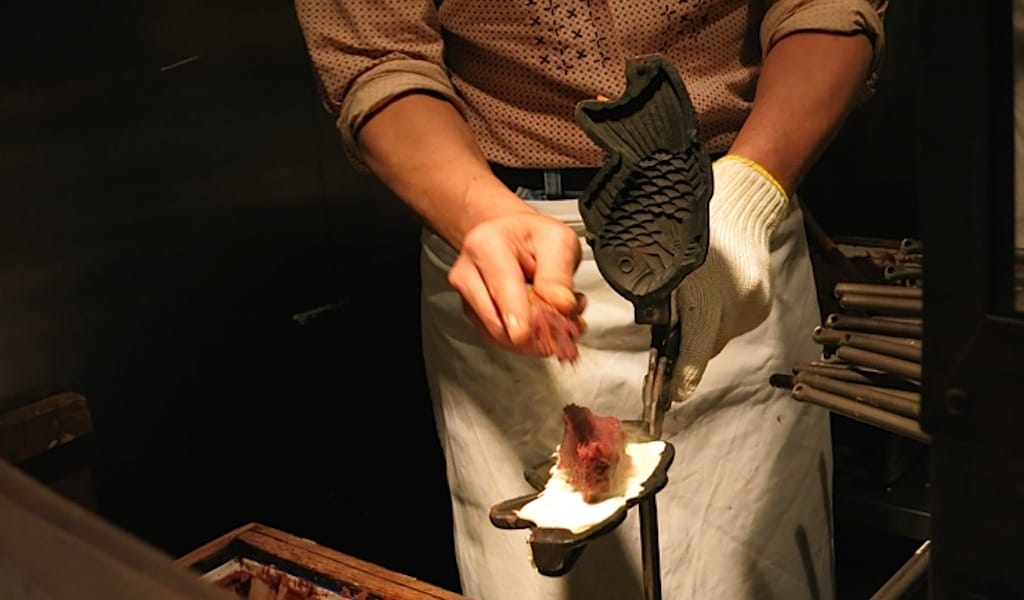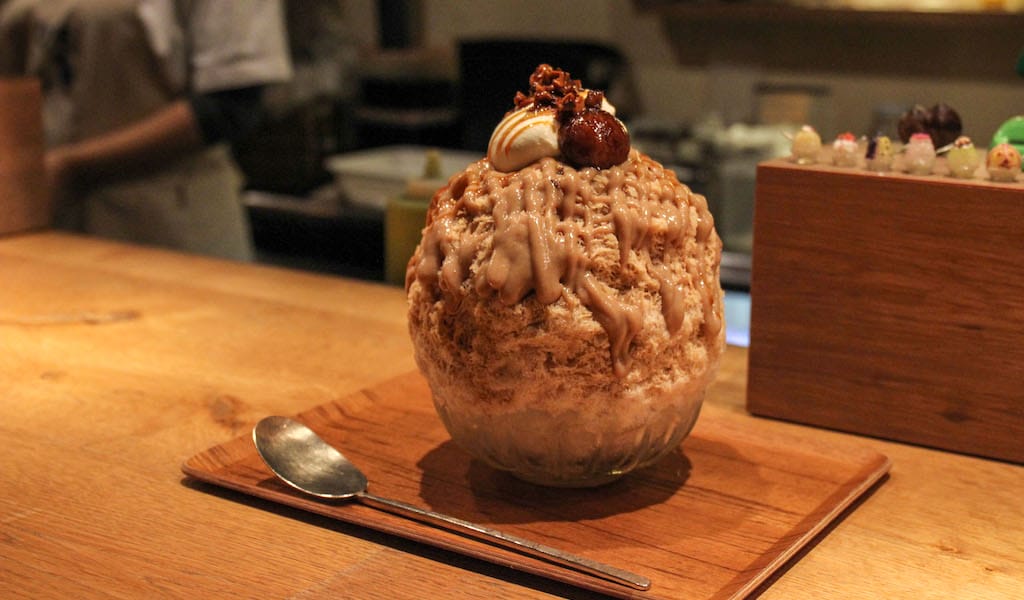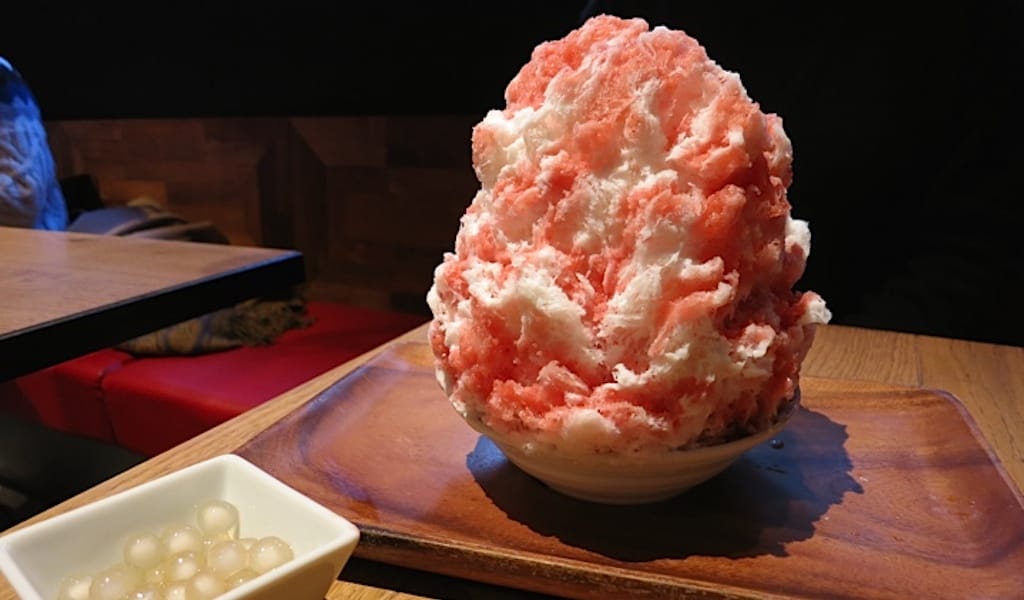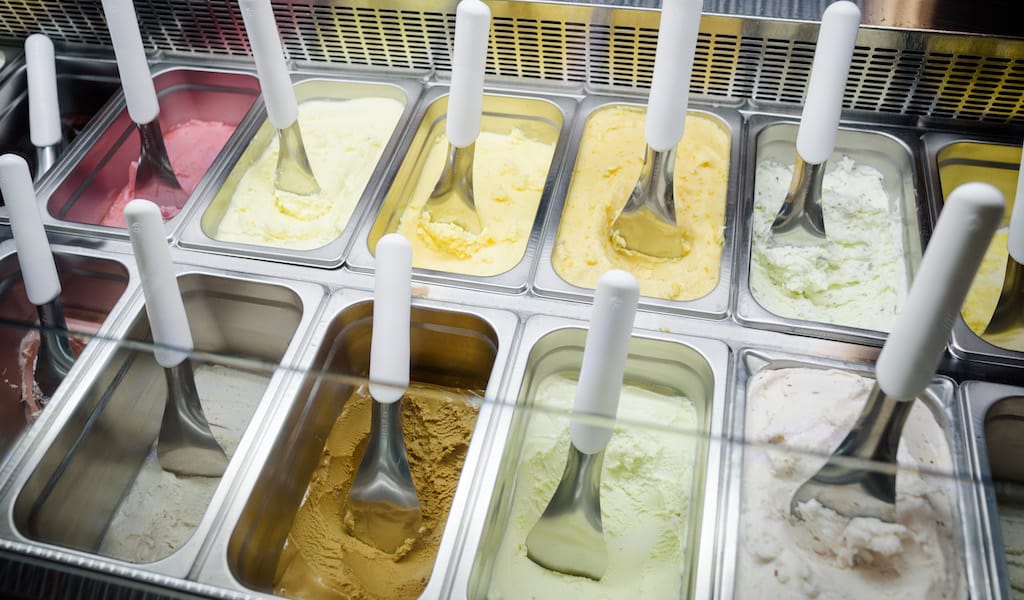It’s always tempting to try and take on all three major museums in Tokyo’s Art Triangle in one day. It would be easy to be overwhelmed by the delicious treasures of the National Art Center Tokyo, the Suntory Museum of Art and the Mori Art Museum, so we usually opt for just one and head to Naniwa Café afterwards for a pot of tea and their delicious taiyaki, a popular form of Japanese sweets (wagashi).
The classic version of taiyaki is a fish-shaped pastry with a waffle-like exterior and a filling of red bean (adzuki) paste, though there are plenty of variations encasing chocolate, cream, custard or some other luscious filling. The finished delicacy is best eaten freshly baked, although many people enjoy it at home reheated. Taiyaki resembles a red snapper (tai or madai), which is considered an auspicious fish in Asia. These kinds of cakes are also popular throughout China and Korea as well.
Japanese people love them as Americans might love doughnuts; they line up in department stores, at street vendors and in shopping malls to buy them to take home or savor right on the spot. Numerous taiyaki stalls can be found at any self-respecting street fair or event. All Tokyo neighborhoods have taiyaki vendors as part of the mix of necessary shops.
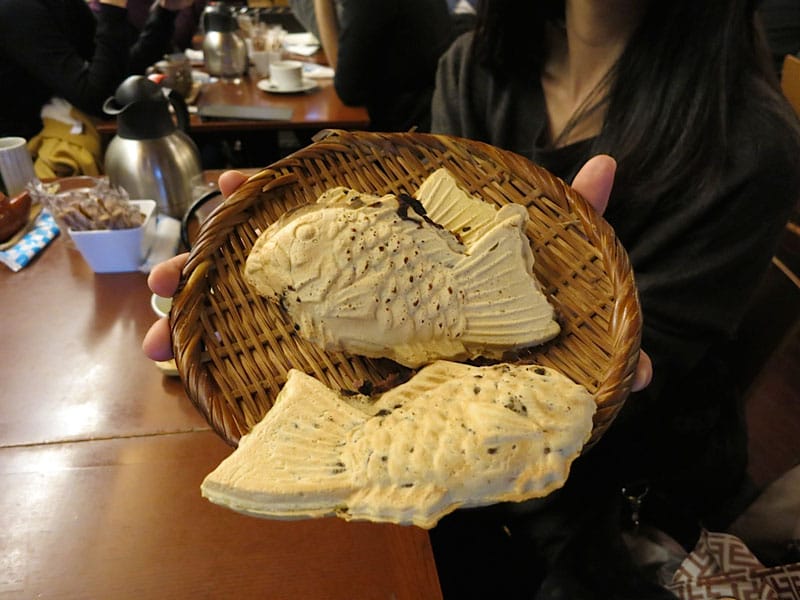
Naniwa bakery in Azabu Juban is tucked into one of the back streets off the shoten gai shopping street, in the shadow of the Mori Art Museum at Roppongi Hills. It’s easy to find because there is always a line outside. Naniwa has been making taiyaki for over a hundred years at the same location, where the eldest son of the owners greets customers as both long-lost friends and neighbors who have come to eat their special Japanese sweets. The welcome always includes an estimate of the wait time to receive our order. On a weekend or a particularly beautiful day, they will take our name and tell us to come back in an hour. If it’s pouring rain, we can usually have our prized treat in only 20 minutes. Most people check in and then explore the old-style shops along the shoten gai, which sell traditional Japanese toys, knives, tea, kimono and antiques.
When we’re not inclined to walk another step or to brave the weather, we climb up to little Naniwa Café on the second floor and order our cakes with tea. The service includes taiyaki and brewed tea in traditional Japanese iron pots. The taiyaki takes time no matter where we want to enjoy it because it is labor-intensive and made to order.
It’s easy to find Naniwa because there is always a line outside.
The quality of the cake depends on the quality of the bean paste, the batter and how it is cooked. At Naniwa, they take it to the highest level, following the same recipe they’ve used for more than a century and using adzuki beans specially grown for them on the northern island of Hokkaido. The baker scoops batter into a fish-shaped mold, then heaps bean paste on top and finally coats it with another layer of batter. The mold is closed and put over a flame to bake. The result is then allowed to rest for a few seconds before it’s presented for appreciation and consumption.
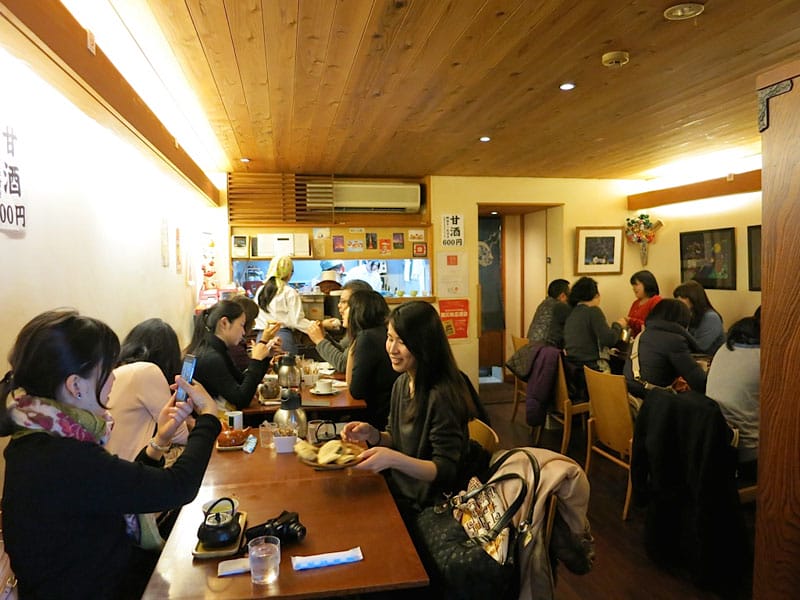
When the cakes finally arrive we watch each other to see how each person will savor the experience. Some start with the tail of the fish to enjoy the waffle-like batter. Others dive right into the head, where there is the largest concentration of bean paste.
When we wait downstairs, we perch on rickety chairs, watching cheerful customers score their cakes and depart. When they call our name we jump to the counter to receive our treats. Nothing is rushed (except for us, in our excitement). The cakes are huge, almost a meal in themselves, and the price is so reasonable we’re always tempted to have more than one.
This article was originally published on January 8, 2015.
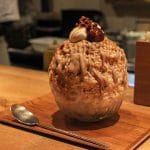 June 13, 2023 Kooriya Peace
June 13, 2023 Kooriya Peace
It’s 9 o’clock in the morning and the narrow streets that fringe Inokashira Park are […] Posted in Tokyo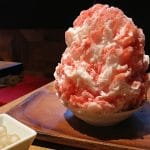 August 14, 2018 Yelo
August 14, 2018 Yelo
Yelo, Roppongi’s kakigori (shaved ice) mecca, summoned the faithful with free samples on […] Posted in Tokyo August 26, 2021 Joe Gelato
August 26, 2021 Joe Gelato
Black ice cream is not an easy sell, but Jose Luis Cervantes, AKA Joe Gelato, is a […] Posted in Mexico City
Published on July 16, 2018
Related stories
Explore Kichijoji on our Tokyo culinary walk!
June 13, 2023
TokyoIt’s 9 o’clock in the morning and the narrow streets that fringe Inokashira Park are largely empty. This part of Kichijoji, a lively neighborhood in west Tokyo, has yet to wake up. Storefront shutters are yet to be lifted; staff inside cafés can be glimpsed preparing for the day. Yet, on one corner, a couple…
August 14, 2018
TokyoYelo, Roppongi’s kakigori (shaved ice) mecca, summoned the faithful with free samples on April 1 like some kind of cool April Fool’s joke for the not-quite-warm weather. The line stretching to the Hard Rock Café a block away was a reminder of things to come. Now the weather has turned much warmer, and the wait…
August 26, 2021
Mexico CityBlack ice cream is not an easy sell, but Jose Luis Cervantes, AKA Joe Gelato, is a persuasive guy. It’s not just his million-dollar smile or easygoing nature, but also the passion that he clearly feels for his gelato. “Before I went to Italy, I knew about the concept of gelato,” says Jose, “but I…







































